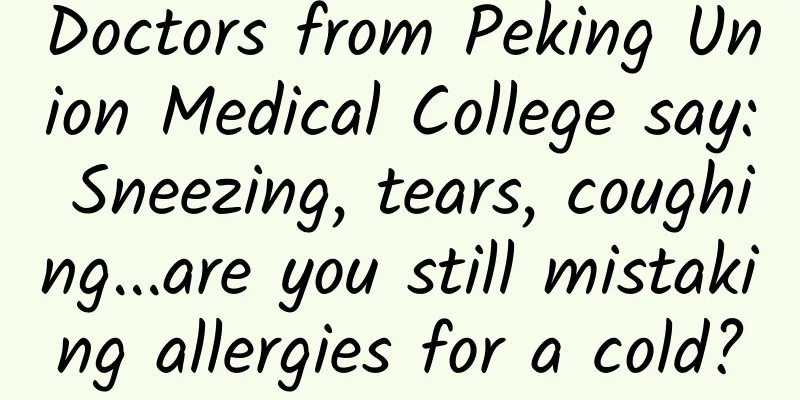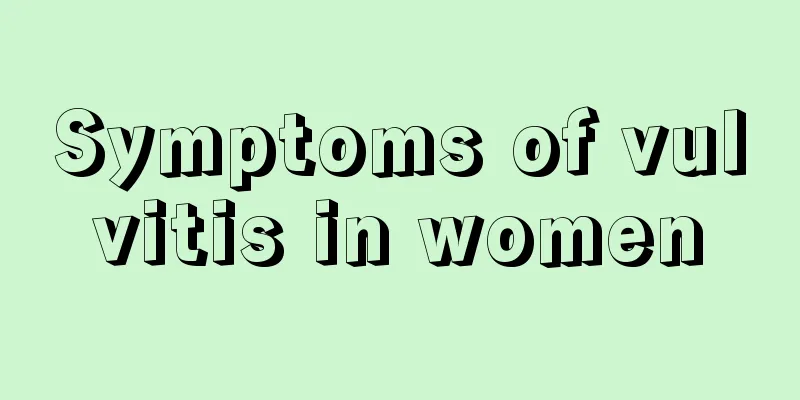Doctors from Peking Union Medical College say: Sneezing, tears, coughing...are you still mistaking allergies for a cold?

|
Spring is the best time of the year, but many people suffer from the "pain of spring". In the season of spring when flowers are blooming, do you suffer from sneezing, runny nose, stuffy nose, itchy eyes, red eyes, tearing, itchy skin, rash, coughing, wheezing...? These symptoms that are easily misdiagnosed as "colds" may actually be caused by pollen allergies. Friends who are allergic to pollen, please look here. Today, let us follow the allergist of Peking Union Medical College Hospital to learn the key points of prevention and treatment of pollen allergies - About the author: Du Zhirong Postdoctoral fellow in clinical medicine, Department of Allergy, Peking Union Medical College Hospital. Research direction: Clinical and mechanism research of severe allergic reactions. Audit expert: Zhi Yuxiang Chief physician, professor, and doctoral supervisor of the Department of Allergy, Peking Union Medical College Hospital. He is good at the diagnosis and treatment of severe allergic diseases such as urticaria, angioedema, hereditary angioedema, allergic rhinitis, allergic asthma, severe refractory asthma, food allergies and severe allergic reactions, anaphylactic shock, etc. What is pollen allergy? Pollen allergy is a common allergic disease, which can be clinically manifested as allergic rhinitis, allergic conjunctivitis, allergic dermatitis, allergic asthma, etc. Pollen spread has obvious regional and seasonal characteristics, so the occurrence of allergic symptoms is also closely related to the region and season. In northern China, symptoms of pollen allergy are more common in spring (mid-March to May) and summer and autumn (July to September). Which pollens are likely to cause allergies? Allergenic pollen mostly uses wind as the medium for pollination, has a large pollen yield, a long pollination period, is light in weight and has small particles. In northern my country, common pollens that cause spring allergies mainly come from birch, cypress, ash, sycamore, poplar, etc. In recent years, the incidence of juniper pollen allergy in Beijing has been high, and juniper pollen has become a "breathing pain" for Beijing residents. Common pollens that cause autumn allergies include pollens from Artemisia, Kochia, Humulus, and Ambrosia rapa. Patients who are allergic to pollen in autumn are more likely to develop allergic asthma. A study by Professor Yin Jia's team from the Department of Allergy at Peking Union Medical College Hospital showed that among all patients with summer and autumn pollen allergies, 37% of patients developed allergic asthma within 5 years and 46.7% of patients developed allergic asthma within 9 years. Understanding pollen allergens can help prevent allergenic pollens. Figure 1 shows common trees and their pollens that cause spring allergies. Figure 2 shows common weeds and their pollens that cause autumn allergies. ▲ Figure 1: A. Birch powder B. Cypress powder C. Ash powder ▲ Figure 2: A. Artemisia pollen B. Kochia scoparia pollen C. Humulus pollen D. Ragweed pollen What are the commonly used methods for detecting pollen allergens in clinical practice? Currently, the commonly used detection methods in clinical practice mainly include skin tests and serum specific IgE (sIgE) tests. The main differences between the two detection methods are shown in the following table. How to prevent and treat pollen allergies scientifically? The prevention and treatment methods of pollen allergy are divided into general treatment, drug treatment and allergen-specific immunotherapy. 1. General treatment 1. Avoid contact with allergens. Patients with pollen allergies should stay indoors as much as possible during the pollen season, keep doors and windows closed, and avoid going to areas with high pollen concentrations. 2. Wear goggles and masks, and use nasal pollen blockers. 3. Install fresh air system and air purifier indoors. 4. Nasal irrigation can be used as a safe and effective supplementary treatment for patients with allergic rhinitis. 2. Drug treatment 1. Systemic medication a. Antihistamines Currently, antihistamines can be divided into two generations. The first generation of antihistamines (such as ketotifen) can antagonize histamine H1 receptors and inhibit the release of allergic reaction mediators, but often cause adverse reactions of the central nervous system such as drowsiness and fatigue. The second generation of oral antihistamines (such as cetirizine, loratadine, desloratadine, levocetirizine, etc.) are more selective for peripheral H1 receptors and have fewer side effects. Antihistamines usually relieve itching, sneezing, and a runny nose but are not as effective for nasal congestion as intranasal corticosteroids. b. Leukotriene receptor antagonists For example, montelukast can be used to relieve the symptoms of allergic rhinitis and can also be used for the prevention and long-term treatment of asthma. c. Mast cell membrane stabilizer Second-line medication for allergic rhinitis, such as sodium cromoglycate, can stabilize the cell membrane of mast cells, inhibit mast cell degranulation, and inhibit the release of allergic reaction mediators such as histamine and 5-hydroxytryptamine, thereby preventing or alleviating bronchial smooth muscle spasm, mucosal tissue edema, and increased vascular permeability. d. Omalizumab It is a monoclonal antibody against IgE and has been approved for the treatment of pollen allergies in Japan and other countries. 2. Topical medication a. Glucocorticoid nasal spray Such as beclomethasone, fluticasone, budesonide, mometasone furoate, etc., are currently effective single-drug maintenance treatments for allergic rhinitis, and have significant therapeutic effects on nasal congestion. Topical glucocorticoids are commonly used drugs for the clinical treatment of allergic rhinitis and can be used preventively 2 weeks before the pollen season. b. Antihistamine nasal spray Such as azelastine nasal spray or olopatadine nasal spray, used to treat allergic rhinitis. c. Antihistamine eye drops Such as azelastine eye drops or olopatadine eye drops, used to treat allergic conjunctivitis. d. Decongestants For example, naphazoline can relieve nasal congestion symptoms, but this type of drug should not be used for more than 1 week, otherwise it may cause drug-induced rhinitis. 3. Allergen-specific immunotherapy (AIT) AIT is a treatment for individuals with allergic diseases that gradually increases the dosage of allergen preparations to improve clinical symptoms when they are subsequently exposed to pathogenic allergens. AIT is currently the only causal treatment measure that can sustainably reduce allergic symptoms and is the only treatment method that can change the natural course of allergic diseases. AIT treatment may be considered in the following situations: 1. Moderate to severe persistent allergic rhinitis and asthma with FEV1 greater than 70%. 2. Avoiding allergens and conventional drug treatment cannot adequately control symptoms. 3. Unable to tolerate conventional drug treatment. 4. Patients hope for lasting improvement in allergy symptoms. Commonly used methods of administration of AIT include subcutaneous injection (SCIT) and sublingual administration (SLIT). Before starting AIT treatment, serum specific IgE or skin test is required to identify the type of allergen. Content from: Dr. Du Zhirong from Union Hospital |
Recommend
What causes women's nipples to be hard?
Hard nipples in women are mostly related to chang...
Demystifying Down syndrome screening during pregnancy: Here’s everything you need to know
Pregnancy is a special moment for every family. I...
The dangers of late menopause
For female friends, everyone's menstrual peri...
What is polycystic ovary syndrome?
The ovary is an important structure in women. For...
Black nipples during pregnancy, is it a boy or a girl?
Now our country has laws that explicitly prohibit...
What to do if leucorrhea is like tofu dregs during pregnancy
Discharge is a necessary secretion of a woman'...
Why are wrinkles most likely to appear around the eyes?
It can be said that wrinkles are really annoying....
What are the causes of abdominal pain after childbirth?
Abdominal pain after childbirth is a common sympt...
What harm does having two abortions in half a year do to your body?
Today's friends are already open to the conce...
How long after taking birth control pills should I take vitamin C
Birth control pills are a common contraceptive me...
Sexual psychological characteristics of female adolescents
Many women will encounter some sexual psychologic...
Empty sac is because the egg waits too long
After becoming pregnant, women need to go to the ...
How long after a miscarriage can you eat cold food?
After a miscarriage, women feel that their diet h...
Why is the leucorrhea so thin?
Why is a woman's secretion so thin and watery...









